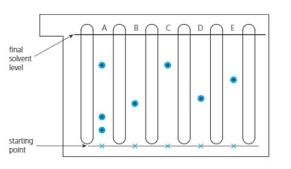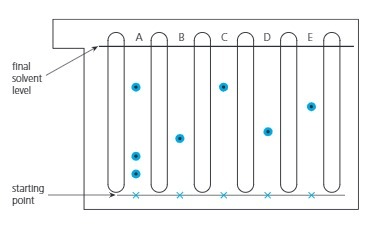RoseMarie Gallagher and Paul Ingram Solutions for Chapter: Separating Substances, Exercise 5: Q
RoseMarie Gallagher Chemistry Solutions for Exercise - RoseMarie Gallagher and Paul Ingram Solutions for Chapter: Separating Substances, Exercise 5: Q
Attempt the practice questions on Chapter 2: Separating Substances, Exercise 5: Q with hints and solutions to strengthen your understanding. Complete Chemistry for Cambridge IGCSE® Second Edition solutions are prepared by Experienced Embibe Experts.
Questions from RoseMarie Gallagher and Paul Ingram Solutions for Chapter: Separating Substances, Exercise 5: Q with Hints & Solutions
Explain in your own words how paper chromatography works.
What do you think a locating agent is?
Which chemical you will need, in an experiment to separate amino acids by chromatography?
What makes values so useful?
For the chromatogram above:

Were any of the amino acids in B-E also present in A? How can you tell at a glance?
For the chromatogram above:

| Amino acids | Distance travelled (cm) |
| A | |
| B | |
| C | |
| D | |
| E |
(solvent front travelled= )
The amino acids travelled the distance from A-E is given, work out the values for the amino acids in A-E.
| Amino acids | Distance travelled (cm) | values |
| A | ||
| B | ||
| C | ||
| D | ||
| E |

Use the table above to name the amino acids. (The Rf values of some amino acids are given)
